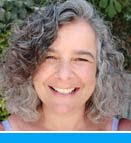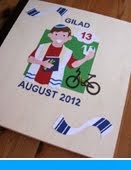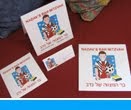After Storm Ciara had died down and the remains of my dad's garden fences had been piled up, we set off to see the "Snowdrop Spectacular" at Burton Agnes Hall. It was rather a brave decision because it was still bitterly cold but the drive through the countryside was beautiful and I was excited to spot a few pheasants and a hare running through the fields en route.
Burton Agnes Hall is an Elizabethan manor house in the village of Burton Agnes, near Driffield, in the East Riding of Yorkshire. It was built by Sir Henry Griffith in 1601–10 to designs attributed to
Robert Smythson. The older
Norman Burton Agnes Manor House, originally built in 1173, still stands on an adjacent site.
Once again we found the house closed for the winter but it was anyway the gardens we wanted to see on this occasion. Every February millions of hardy snowdrops push through the cold winter ground to create a magnificent white carpet across the historic woodland floor at Burton Agnes Hall. Despite the cold and rainy weather we had a lovely walk along the pathways, enjoying the endless snowdrops and the wood sculptures of owls, squirrels and more
that line the paths through the trees. After the torrential rain of the previous day, the snowdrops were a joyous site.






As the name suggests, snowdrops or Galanthus from the Greek gála meaning "milk" and ánthos meaning "flower", are one of the first spring flowers to bloom, often appearing while snow still blankets the ground. This low-growing plant tolerates partial shade to full sun, a variety of soil types, and requires almost no maintenance. It is toxic to animals and humans, but where this is not a concern, it offers the benefit of being virtually immune to feeding by deer and other wildlife. The beautiful little flower is a symbol of hope and purity; the green coloured stem of the snowdrop symbolises and links with the Pagan ideals of health and well-being, whilst the white symbolises the light of the winter sun and reminds us that winter eventually gives way to spring.




In addition to the historic woodland there is also an Elizabethan walled garden and maze at Burton Agnes Hall. There was not so much to see in the walled garden at this time of the year, but I believe that it is stunning in the summer months.
A café in the main courtyard was a welcoming end to our woodland stroll. A hot cup of coffee was a must and the
ploughman's lunch was delicious! Outside the shop were pots of snowdrops and irises for sale in every colour imaginable.
The historic 13th-century church of St Martins is tucked away on the hillside immediately behind Burton Agnes Hall, below. In the centre of the village is the mere, a large pond surrounded by trees. It is overlooked by Mere House which was built as a Wesleyan Methodist Chapel in 1837 and was converted to a private house in 1987, bottom.
As we left Burton Agnes Hall I spotted a sign pointing to an ancient monument just 3 miles away. A quick google told me that is was the Rudston Monolith, above, the tallest
standing stone in Britain. Of course I had to go and see it!
The Rudston Monolith is situated in the
Norman churchyard of All Saints in the village of
Rudston in the East Riding of Yorkshire. The stone, which predates the church by over 2,500 years, is grey sandstone or
gritstone and was quarried 10 miles away at
Cayton Bay. It was brought to Rudston either in the late
Neolithic or early
Bronze Age. The task of transporting this immense
monolith over 40 miles to Rudston must have presented a staggering feat of labour and strength, showing that it was a matter of extreme importance to the architects of the stone.
The stone stands at almost 8 metres tall and is nearly 2 metres wide, a metre thick and weighs somewhere in the region of 26 tons. An excavation in the late 18th century suggested that its depth below ground is as great as its height. The top of the stone has been weathered and eroded into a fluted peak and a lead cap was added to try to preserve it in the 18th century.
It seems likely that the stone marked a prehistoric holy place or worship centre for the indigenous
pagan religion, and that
Anglo-Saxon missionaries followed the successful strategy of "Christianising" this already sacred object, possibly by fixing a cross to the top. This could account for the name "Rudston" since the old English word for cross is "rood" and "stane" means stone.
A popular myth about the stone is that the devil, angered at the construction of a church on this sacred pagan hill, hurled a huge stone javelin or thunderbolt at it to destroy it but, thanks to divine intervention, the weapon veered off course and landed in its present position.
There was one last treat before it was time for me to return home. I was excited to find that the comedian
Michael McIntyre was appearing at the Bonus Arena in Hull as part of his Big World Tour. The man who finds the funny in every domestic scenario, from iPad-addicted sons to shoe-fixated wife, was brilliant! It was a wonderful way to end a great holiday with my dad.
* This post has been shared on
Floral Friday Fotos,
Friday Bliss,
All Seasons,
The Good. The Random. The Fun.,
Sharon's Souvenirs,
Wordless Wednesday (on Tuesday),
Our World Tuesday,
Tuesday's Treasures,
Travel Tuesday,
Pictorial Tuesday and
My Corner of the World.












































































